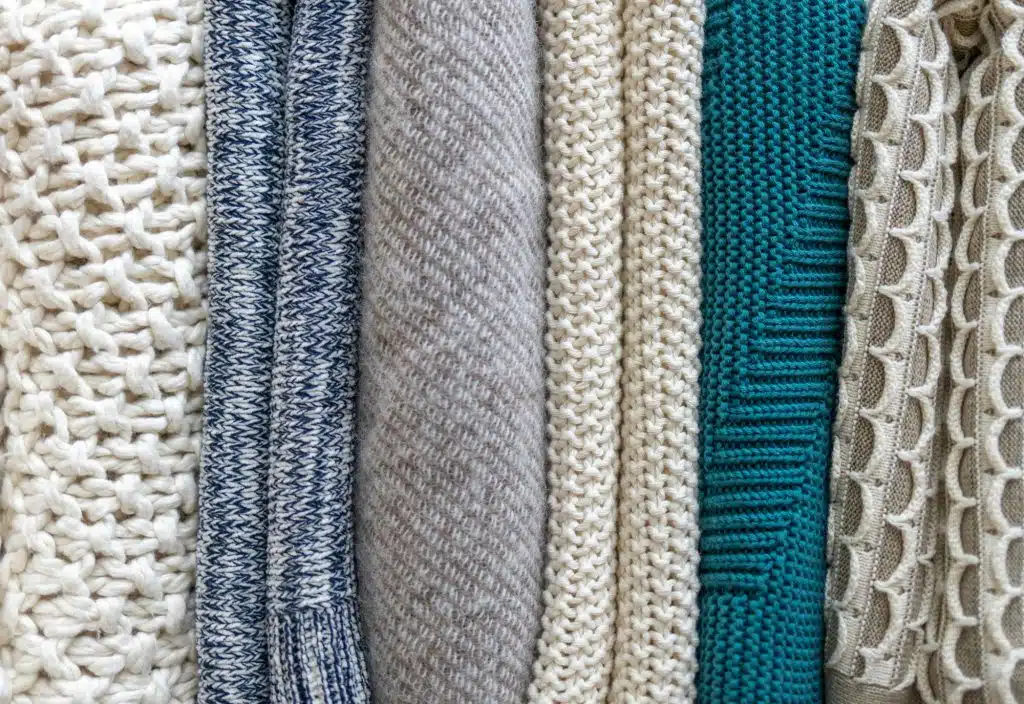Introduction
Washing blankets can be a daunting task, especially when dealing with different fabric types.
This guide will walk you through the best practices for washing various blanket fabrics, how often to wash them, tips for storing them, and the benefits of using a laundromat for large blankets.

Washing Different Blanket Fabric Types
Wool Blankets
Wool blankets are warm and durable but require careful handling to prevent shrinkage and damage.
- How to wash: Use cold water and a gentle wool-safe detergent. Opt for the delicate cycle on your washing machine or hand wash them.
- How to dry: Lay flat to air dry, avoiding direct sunlight to prevent fading.
- How often: Wash wool blankets every three months, or more often if they are heavily used.
Fleece Blankets
Fleece blankets are known for their remarkable insulating properties and softness.
- How to wash: Use warm water and a mild detergent. Avoid fabric softeners as they can reduce the fleece’s softness.
- How to dry: Tumble dry on low heat or air dry to maintain the fabric’s texture.
- How often: Wash fleece blankets every 2-4 weeks to keep them fresh and soft if they’re used frequently.
Cotton Blankets
Cotton blankets are easy to care for and can withstand frequent washing.
- How to wash: Use warm or cold water with a mild detergent. Cotton blankets can typically handle regular washing machine cycles.
- How to dry: Tumble dry on low heat or air dry to prevent shrinking.
- How often: Wash cotton blankets every 2-4 weeks, depending on frequency of use.
Synthetic Fabric Blankets
Synthetic blankets, such as those made from polyester or acrylic, are durable and typically easy to care for.
- How to wash: Use warm or cold water and a mild detergent. Synthetic fabrics can generally withstand a regular wash cycle.
- How to dry: Tumble dry on low heat or air dry to avoid melting or warping the fabric.
- How often: Wash synthetic blankets every two to three weeks, or more frequently if they are heavily used.

Storing Blankets
Proper storage of blankets helps keep them fresh and extends their lifespan.
Clean Before Storing
Storing dirty blankets is a recipe for disaster. Ensure blankets are clean and completely dry before storing to prevent mold and mildew.
Use Breathable Storage Bags
This isn’t required, however, if you opt to use storage bags you should avoid plastic bags, which can trap moisture. Opt for cotton or linen storage bags instead.
Store in a Cool, Dry Place
Keep blankets in a cool, dry area away from direct sunlight to prevent fading and deterioration.
Add Lavender Sachets
Place lavender sachets in storage to keep blankets smelling fresh and deter moths.

Using a Laundromat for Large Blankets
Washing large blankets at home can be challenging due to their size and weight. Overloading your home washer and dryer can damage your appliances. Here’s why using a laundromat can be beneficial:
Large Capacity Machines
Laundromats have industrial-sized washers and dryers that can handle bulky blankets more efficiently.
Efficient Cleaning
Professional-grade machines and detergents ensure a thorough clean, removing deep-seated dirt and allergens.
Time-Saving
Laundromats offer faster wash and dry cycles, saving you time and effort.
Cost-Effective
Avoid wear and tear on your home washer and dryer, potentially saving on repair costs.
Conclusion
Properly washing and storing your blankets ensures they remain clean, fresh, and cozy for years to come.
Whether dealing with wool, fleece, cotton or synthetic blankets, following the right washing techniques and storage tips is essential.
For large or heavily soiled blankets, consider the convenience and efficiency of using a laundromat. By giving your blankets the care they deserve, you’ll enjoy their comfort and warmth without compromise.
Our Laundromat LocationsDisclaimer: The advice provided in this blog post is meant for general informational purposes only. Always refer to the care instructions provided by the manufacturer for your specific laundry machines and clothing items.
Related articles
The Ultimate Guide to Washing Doonas & Quilts
Firstly, what is a doona? Doonas, are also known as comforters, quilts or duvets. A doona is a type of bedding that consists of a soft, quilted,...
read moreThe Definitive Guide to Washing and Caring for Your Pillows
the best ways to wash your pillows Pillows are more than just a place to rest your head – they’re integral to a good night’s sleep and...
read more



